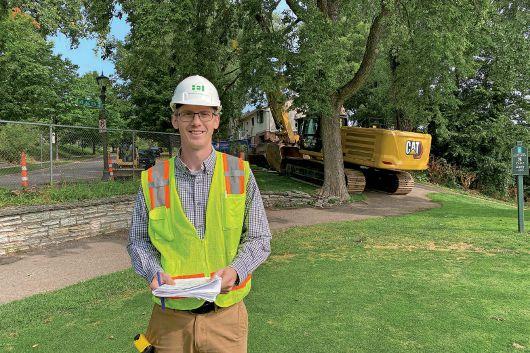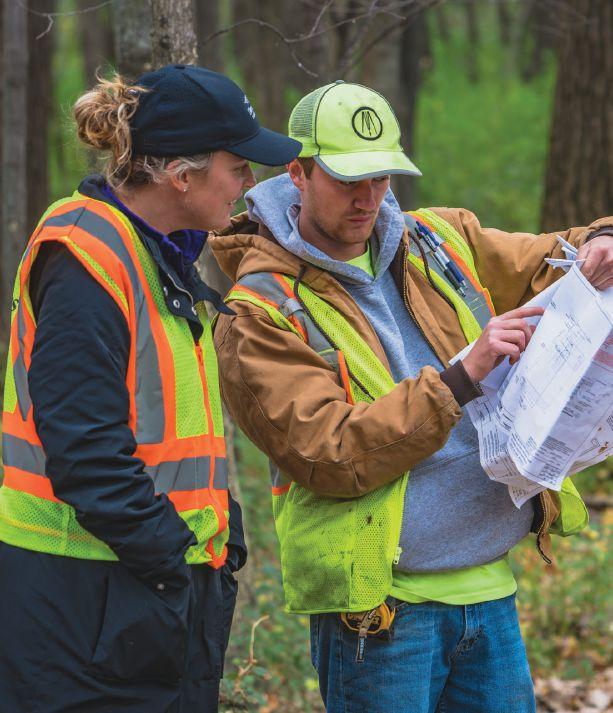
2 minute read
NDSU students shine at national cybersecurity competition
FARGO, N.D. • North Dakota State University students took top spots in the spring 2022 National Cyber League individual competition. Eight students placed in the top 10% of more than 3,000 participants and two ranked in the top “Diamond-1” medal category. An additional 11 students received diamond-level metals, 16 received platinum medals, 10 received gold medals, three received silver medals and four received bronze medals. Overall, 56 NDSU students participated in the competition.
National Cyber League provides students an exciting competition environment to learn and demonstrate their cybersecurity skills. The competition challenges students in 10 areas: open source intelligence; cryptography; cracking passwords; analyzing logs; analyzing network traffic; wireless access; forensics, scanning; exploiting web applications; and enumeration/exploitation.
yet another important affirmation of our expertise in these critical cyber areas.”
With this designation, Minot State is formally recognized by the U.S. government for its robust cybersecurity-related programs, having undergone in-depth assessment and met rigorous requirements.
Students earn points and are ranked in each category. Participants perform tasks as part of the competition’s challenges that correspond to tasks performed in real world cybersecurity industry jobs.
“The competition showcases students’ technical and problem-solving skills,” said Jeremy Straub, NDSU Cybersecurity Institute director and assistant professor of computer science. “NDSU students can show employers throughout the country that they are well prepared for real cybersecurity jobs using objective measures.” limited controls but ours is really the first multi-bed fully automated control-type setup that we are aware of.”
The current semester’s level of participation surpassed NDSU’s previous record and places NDSU among the largest participating institutions nationwide.
As a student-focused, land grant, research institution, we serve our citizens.
A Customized and Evolving System
The first automated “pump-and-treat” system was successfully installed at Hansen Park in New Brighton in 2017, but since then it also has been installed at other Minnesota sites and has proven to remove up to about 90% of phosphorus.
The system, which can be customized for each location and managed remotely, can be beneficial to water districts and municipalities, Schmidt said, noting there are many benefits of the automated system, no less than the capacity to treat stormwater 24/7.

“You’re not just relying on rainfall events,” he said.

Axtell agrees on that point: “We’re not only treating water during rainstorms, we’re also treating base-flow conditions that come through our drainage ditches or, depending on where it’s located, we’ve got a wide network of public drainage in our watershed. Even for a relatively urban watershed, that’s kind of unique, and so we’re able to operate 24/7. That’s the key to having those multiple filter beds – so we rotate that flow around and keep it running all the time.”
Axtell said the watershed district last year treated some 42 million gallons of water throughout the operating season, and that “it makes it more efficient and cost effective over the life of the project to be able to know that it’s running all the time as opposed to just when we get rain.”

Another benefit, Schmidt said, is that a passive system needs a larger amount of area to store and treat water, whereas HEI’s automated system requires smaller space.
“You have flexibility and you’re not constrained to site elevations because you can pump the water as high as you need and get it to go where you want it to go,” he said. “I think there is more flexibility in how you design them versus a passive system.”
The team at HEI is not sitting on its laurels, but is looking at ways the system may be improved in the future, depending on client needs, such as using weather adaptive technology. Schmidt said such technology would notify the system of upcoming rain events so water could be more effectively managed during those episodes.
“That could be combined with flooding, where maybe you have a site that can both store water during a flood event as well as treat water with a system like we’re talking about,” he said. “We’ve used this technology so far on at least one site.”








